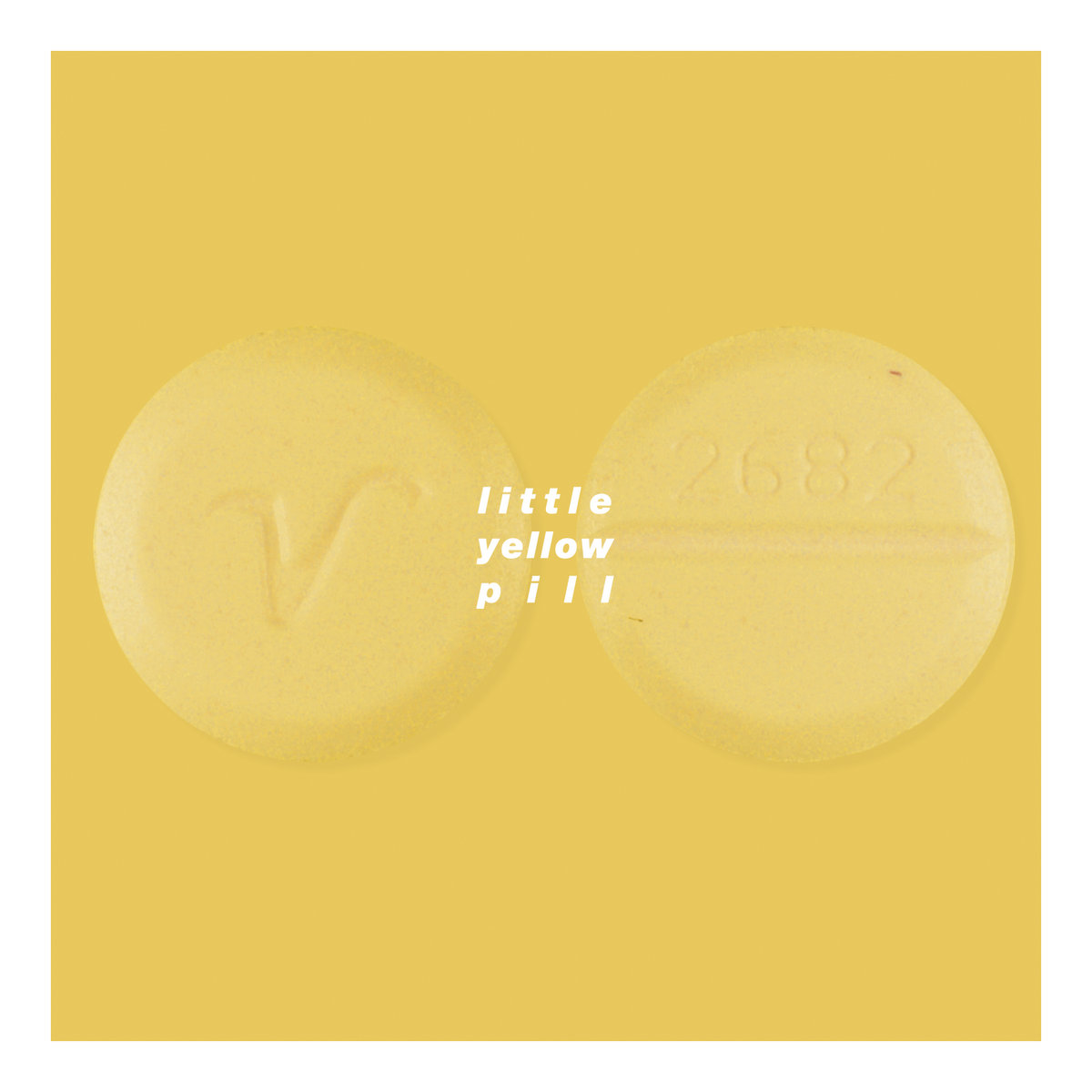Ever wondered what that tiny yellow pill with an "L" on it is all about? If you’ve stumbled across this little mystery in your medicine cabinet or while scrolling online, you’re not alone. Many people have questions about its purpose, ingredients, and potential uses. So, let’s dive right into it!
Let me break it down for ya. This little yellow pill has been making waves on forums, social media, and even doctor visits. Some folks swear by it as a miracle solution for certain health issues, while others are just plain curious. But before we get too deep, let’s set the stage: this pill isn’t just any random tablet—it’s something worth understanding if you’re planning to take it.
Now, I’m not here to scare you or make things overly complicated. My goal is to give you the straight scoop on what this pill does, why it’s used, and how it might impact your life. So, grab a coffee (or tea), sit back, and let’s uncover the truth behind the little yellow pill with an L on it.
Read also:Jenna Ortega Leaked The Truth Behind The Rumors And Controversies
What Exactly Is the Little Yellow Pill with an L on It?
Alright, so the little yellow pill with an "L" stamped on it is often linked to a prescription medication called Lorazepam. Yeah, that’s the fancy name for it. Lorazepam is part of the benzodiazepine family, which basically means it’s designed to help calm the nerves, reduce anxiety, or even knock you out if you’re having trouble sleeping.
Here’s the thing: it’s not just some random over-the-counter drug you can pick up at CVS or Walmart. This pill requires a doctor’s prescription because it’s pretty powerful stuff. Doctors usually prescribe it for conditions like anxiety disorders, panic attacks, seizures, or even to help with nausea during chemotherapy.
But wait, there’s more. The "L" on the pill isn’t just random branding—it’s actually a way to identify the specific manufacturer or dosage. Different companies might use slightly different designs or colors, but the core function remains the same: it’s all about helping your body chill out when it needs to.
Why Is Lorazepam Prescribed?
Let’s talk about the real reasons why doctors hand out this little yellow pill. Lorazepam is no joke—it’s got a reputation for being effective in treating some serious conditions. Here’s a quick rundown:
- Anxiety Disorders: If you’re dealing with constant worry, panic attacks, or social anxiety, Lorazepam can help bring that chaos under control.
- Panic Attacks: For those moments when your heart feels like it’s going to explode, this pill can be a lifesaver.
- Seizures: In some cases, Lorazepam is used to stop seizures in their tracks, especially in emergency situations.
- Sleep Issues: If you’re tossing and turning all night, this pill might help you catch some Z’s.
But here’s the kicker: while it works wonders for a lot of people, it’s not a one-size-fits-all solution. Your doctor will assess your specific situation before deciding if it’s the right fit for you.
How Does the Little Yellow Pill Work?
Okay, so now you know what it is and why it’s prescribed, but how does it actually work? Let’s get scientific for a sec. Lorazepam targets the brain’s GABA receptors, which are like the body’s natural chill-out switches. When you’re stressed or anxious, your brain is basically in overdrive, firing off too many signals. This pill steps in and slows things down, creating a calming effect that helps you relax.
Read also:Breaking News Simon Cowell Car Accident Today Ndash The Full Story
Think of it like hitting the brakes on a runaway car. The pill tells your brain to slow down, breathe, and chill out. That’s why people who take it often feel a wave of calm wash over them within minutes. But here’s the thing: it’s not a long-term fix. Doctors usually prescribe it for short periods because prolonged use can lead to dependency or other side effects.
Common Uses and Misconceptions
There’s a lot of chatter out there about this pill, and not all of it is accurate. Let’s clear up some common misconceptions:
- It’s Not a Cure-All: While Lorazepam can help with anxiety, it doesn’t address the root cause of the problem. Therapy or other treatments might still be necessary.
- It’s Not a Party Drug: Some people think it’s cool to pop these pills at parties, but that’s a huge no-no. Misusing this medication can lead to serious health risks, including addiction.
- It’s Not Instant Magic: Sure, it works pretty quickly, but it’s not a magical solution to every problem. It’s meant to be used under medical supervision.
So, next time you hear someone talking about the "little yellow pill," you’ll know exactly what they’re referring to—and hopefully, you’ll steer them toward responsible usage.
Side Effects You Should Know About
Now, let’s talk about the not-so-fun side of things. While Lorazepam is super effective for a lot of people, it’s not without its downsides. Here are some potential side effects to watch out for:
- Drowsiness: Feeling sleepy or groggy is pretty common, especially when you first start taking it.
- Dizziness: You might feel a bit off-balance, so avoid driving or operating heavy machinery until you know how your body reacts.
- Memory Issues: Some people report memory lapses or difficulty concentrating while on this medication.
- Dependency: Long-term use can lead to addiction, so it’s important to follow your doctor’s instructions carefully.
If you experience any of these side effects, don’t hesitate to reach out to your healthcare provider. They’re there to help you navigate this journey safely.
How to Use It Safely
Using Lorazepam safely is all about following the rules. Here are some tips to keep in mind:
- Take It as Prescribed: Stick to the dosage and schedule your doctor gives you. Don’t try to adjust it yourself.
- Avoid Mixing with Alcohol: Combining this pill with alcohol can amplify its effects and lead to dangerous situations.
- Be Mindful of Withdrawal: If you’ve been taking it for a while, don’t stop suddenly. Work with your doctor to taper off gradually.
Remember, this pill is a tool, not a toy. Treat it with respect, and it’ll serve you well.
Who Should Avoid the Little Yellow Pill?
Not everyone is a good candidate for Lorazepam. Certain groups of people should steer clear or proceed with extra caution:
- Pregnant or Breastfeeding Women: This medication can pass through the placenta or breast milk, potentially harming the baby.
- People with Liver or Kidney Issues: Your body might not metabolize the drug properly, leading to increased side effects.
- Individuals with a History of Addiction: Given its potential for dependency, it’s best to avoid it if you’ve struggled with substance abuse in the past.
If any of these apply to you, make sure to discuss it with your doctor before starting treatment.
Alternatives to Lorazepam
Not into the idea of taking a benzodiazepine? No worries! There are plenty of alternatives depending on your specific needs:
- Cognitive Behavioral Therapy (CBT): A non-medication approach that helps you reframe negative thoughts and manage anxiety.
- Other Medications: SSRIs or SNRIs might be a better fit for long-term anxiety management.
- Lifestyle Changes: Exercise, meditation, and a healthy diet can go a long way in reducing stress and improving overall well-being.
It’s all about finding what works best for you. Don’t be afraid to explore your options!
Real-Life Stories and Testimonials
Let’s hear from some real people who’ve used the little yellow pill. Sarah, a 35-year-old marketing executive, says, "I was having panic attacks at work, and nothing seemed to help until my doctor prescribed Lorazepam. It gave me the breathing room I needed to get my life back on track." Meanwhile, John, a retired teacher, adds, "I used it for sleep issues, and it worked wonders for a while, but eventually, I had to switch to something else."
These stories highlight the importance of individualized care. What works for one person might not work for another, so it’s crucial to communicate openly with your healthcare provider.
Expert Insights
Dr. Emily Carter, a psychiatrist with over 20 years of experience, weighs in: "Lorazepam is an excellent option for short-term anxiety relief, but it’s not meant to be a lifelong solution. It’s important for patients to understand its limitations and work toward sustainable mental health practices."
Her advice? Use it wisely, and always pair it with therapy or other supportive measures for the best results.
Conclusion: Is the Little Yellow Pill Right for You?
So, there you have it—the lowdown on the little yellow pill with an "L" on it. Whether you’re considering it for anxiety, sleep issues, or something else, it’s important to approach it with knowledge and caution. Remember, this pill is a powerful tool, and like any tool, it needs to be used responsibly.
Here’s a quick recap of what we covered:
- Lorazepam is a benzodiazepine commonly prescribed for anxiety, panic attacks, and sleep issues.
- It works by calming the brain’s GABA receptors, creating a relaxing effect.
- Side effects include drowsiness, dizziness, and potential dependency.
- Not everyone is a good candidate for this medication, so consult your doctor first.
Now, it’s your turn! If you’ve got questions or experiences to share, drop them in the comments below. And don’t forget to share this article with anyone who might benefit from it. Together, let’s spread the word about responsible medication use and better mental health practices!
Table of Contents
- What Exactly Is the Little Yellow Pill with an L on It?
- Why Is Lorazepam Prescribed?
- How Does the Little Yellow Pill Work?
- Common Uses and Misconceptions
- Side Effects You Should Know About
- How to Use It Safely
- Who Should Avoid the Little Yellow Pill?
- Alternatives to Lorazepam
- Real-Life Stories and Testimonials
- Expert Insights


